The Art of Braising – a Simple Cooking Technique with Huge Outcomes
Let’s look at the 9 essential steps to braising anything and then at the braising technique in more detail.
9 Simple Steps to Great Braised Meat
There are nine basic steps to braising meat:
1. Season the main ingredient with salt and pepper.
2. Heat a few tablespoons of oil and/or butter in a heavy pan or Dutch oven.
3. Saute meat or vegetables in the pan on medium-high heat until the meat browns.
4. Deglaze the pan by pouring broth, beef stock, wine, or juice, scrape any pieces of meat stuck to the pan, and stir.
5. Add cooking liquid (water, stock, wine, juice, or some combination) to the halfway point of the main ingredient.
6. Cover and place the meat on the middle of a rack in an oven preheated oven to 300° – 350° Fahrenheit.
7. Cook until completely tender. This can range from 1 to 6 hours, depending on your cooking.
8. Remove the pan from the oven and strain the meat and vegetables from the liquid.
9. Remove the excess fat floating in the liquid, and then reduce the sauce to the desired thickness by cooking it down over low heat until it thickens. Or, make gravy by adding a mix of equal parts fat and flour (a roux).
What Is Braising?
Braising is a cooking method that involves first searing the food at a high temperature, then slowly cooking it in liquid over low heat. This method is often used for tougher cuts of meat, as the long cooking time helps to break down the connective tissue and make the meat tender and flavorful.
Braising can be done on the stovetop or in the oven, and the type of liquid used can vary depending on the recipe and the desired flavor.
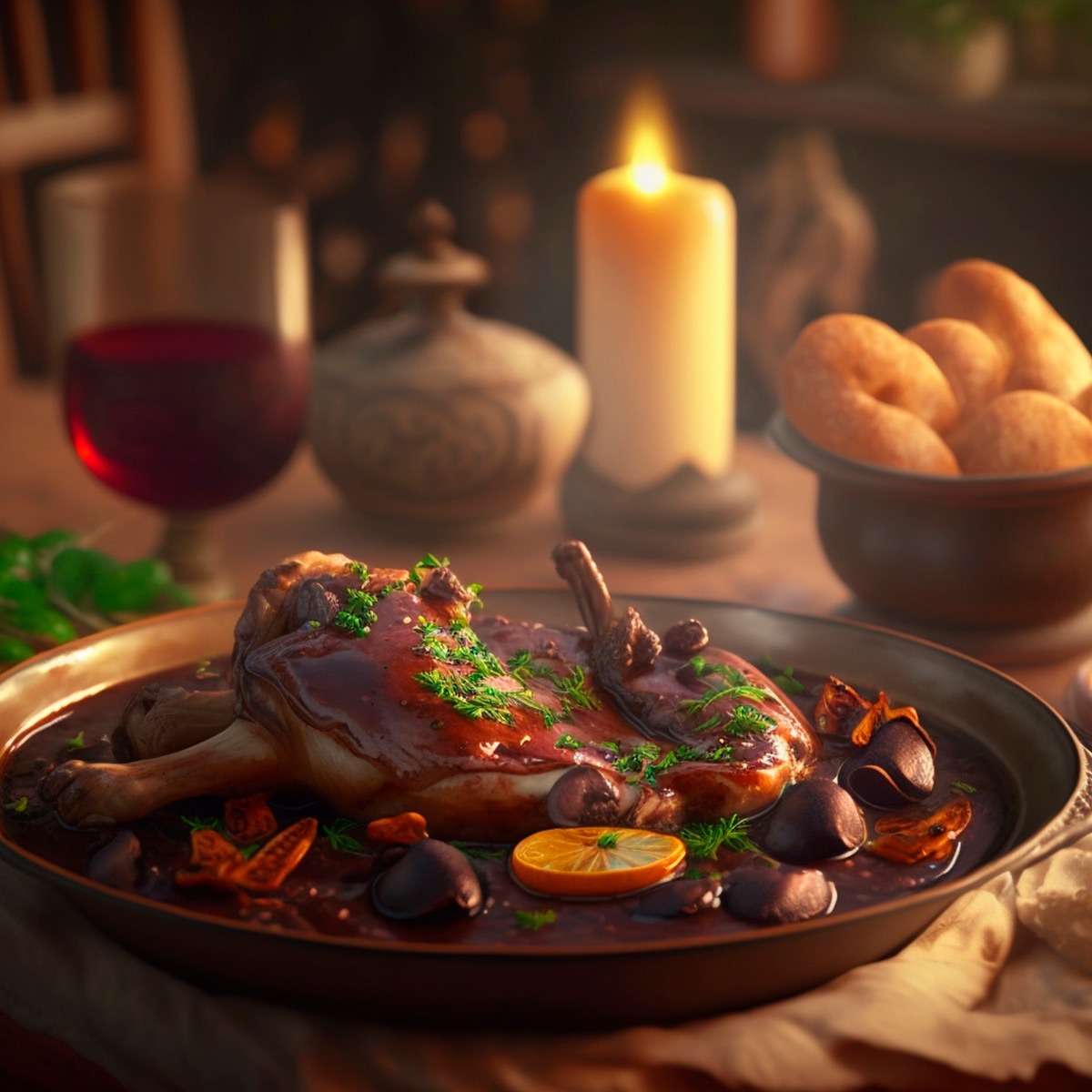
First Steps
The first step in braising is to sear the food. This is typically done by heating a large, heavy-bottomed pot or Dutch oven over medium-high heat, then adding a small amount of oil or fat. Once the oil is hot, the food is added to the pot and allowed to cook until a nice brown crust develops. This step helps lock in the moisture and flavors of the food and creates a flavorful base for the braising liquid.
After searing, the food is removed from the pot and set aside. The pot is then deglazed by adding a liquid, such as wine or broth, and scraping the bottom to loosen any bits of food that may have stuck to the bottom. This creates a flavorful base for the braising liquid, which is added to the pot along with any vegetables or other ingredients.
The food is then returned to the pot, which is covered and placed in the oven or on the stovetop. The braising liquid should come about halfway up the side of the food and be heated until it comes to a simmer. The pot is then covered and allowed to cook slowly over low heat for several hours until the food is tender and easily falls apart.
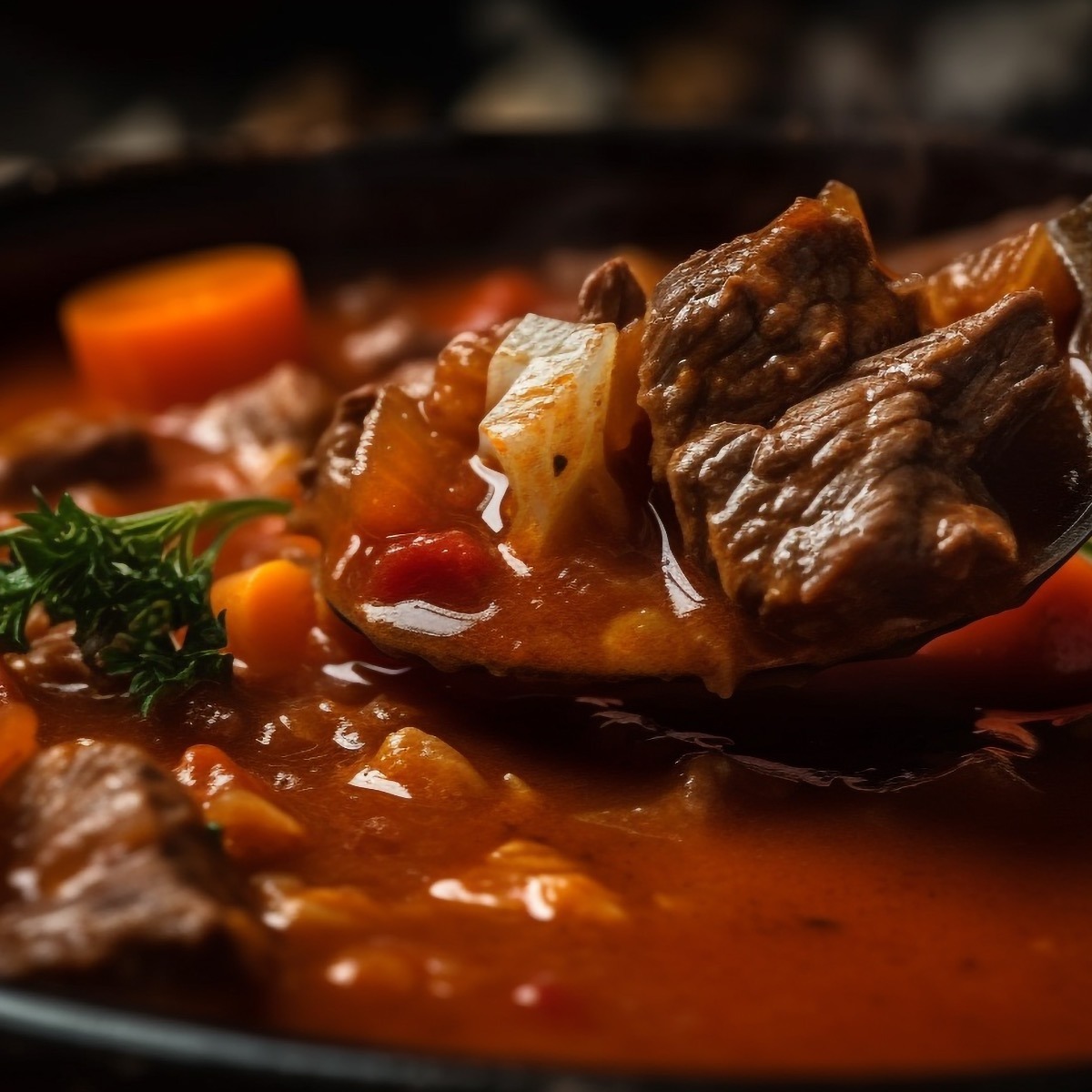
Makes Its Own Sauce
During the braising process, the liquid in the pot will reduce and thicken, creating a rich and flavorful sauce. This sauce can be served with braised food or used to make gravy or other sauce to serve with the dish.
One of the benefits of braising is that it allows the cook to use tougher, less expensive cuts of meat. These cuts typically have a lot of connective tissue, making them tough and chewy if cooked using a different method. However, the long, slow cooking process of braising breaks down this connective tissue, making the meat tender and flavorful.
Another benefit of braising is that it is a versatile cooking method that can be used with various ingredients. In addition to meat, braising can be used to cook vegetables, fish, and even fruits. The type of liquid used in the braising process can also be varied to create different flavors, such as using the broth for a savory dish or cider for a sweet and tangy flavor.
Overall, braising is a simple but effective cooking method that can be used to create tender and flavorful dishes. By searing the food and slowly cooking it in liquid over low heat, braising allows the cook to create dishes with rich, complex flavors that will impress.
More Pluses
Yet another plus of cooking with this method is that the meat tastes great, and you also get delicious broth, sauce, or gravy. It’s one-pot cooking at its finest. There is little to clean up; anything leftover can be reheated or frozen and reheated for later.
You can braise in a crock pot, pressure cooker, large saute pan, or the most often used cooking vessel for braises, a Dutch oven.
Some popular dishes you may have heard of that use braising techniques are osso buco, pot roast, braised veal & lamb shanks, and braised cabbage.
You can braise just about any meat, fish, or vegetable you want and be as creative as you like with seasoning, but some ingredients are better for braising, and some you want to cook using other techniques like grilling or roasting.
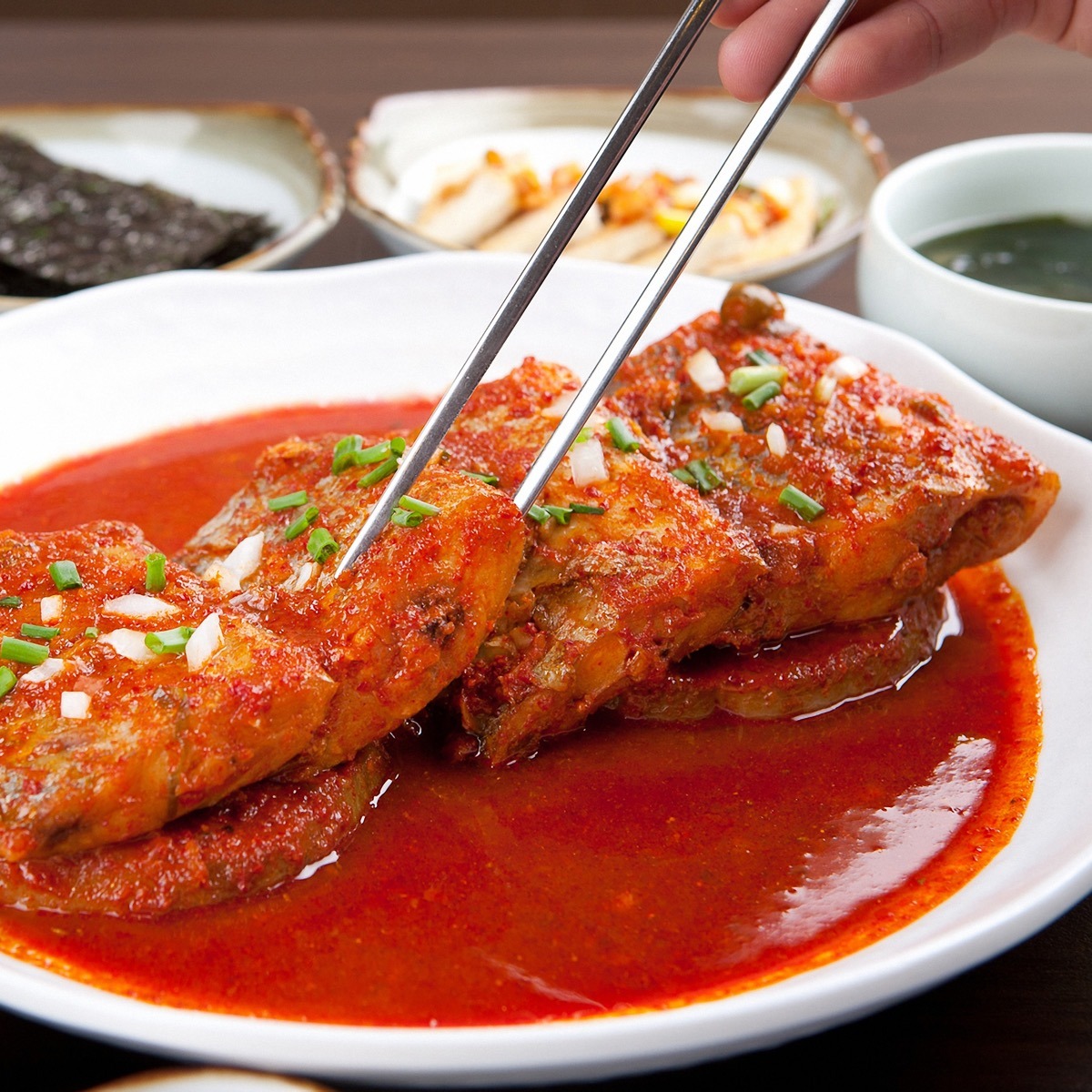
The Science of Braising?
If you’re curious about how cooking in this fashion makes tough, the leathery meat tender is done by simmering the meat moistly and covering it over low heat for a lengthy time. This process breaks down the tough connective tissue in meat to collagen.
The moisture and heat build through time, and the collagen dissolves into gelatin. Heat also contracts and coils the muscle fibers.
Over time, these fibers expel moisture, and the meat becomes dry. After more time, these fibers relax and absorb the melted fat and gelatin.
As for the vegetables, braising breaks down the cellulose in them and stretches the starches. The long and short of this is that everything becomes very tender.
Without getting too specific, the meat we eat is a muscle made up of muscle fibers and connective tissue. The muscle fibers are the long thin strands we can see and think of as meat.
The connective tissue is the thin, translucent film that you sometimes ask the butcher to remove and helps hold the bundles of muscle fiber together. Connective tissue is mostly collagen, a potent protein that breaks down with enough heat.
So braising meat is about breaking down tough connective tissue and changing it into collagen by applying moist heat for some time, depending on what you are cooking. With more time and heat, the collagen breaks down and dissolves into gelatin.
It takes a temperature of about 140 degrees F. to break down the collagen into gelatin.
What happens to the muscle fiber while this connective tissue breaks down (collagen is melting)? The fibers start to contract, coil, and expel moisture.
The heat is drying out the meat like squeezing a sponge. As the process continues and the meat breaks down, you end up with very tender but dry meat.
The good news is that the muscle fibers have had enough at some point and begin to relax. When this happens, they absorb back some moisture, the melted fat, and gelatin, giving the meat a wonderful texture and flavor.
And remember, you have all this wonderful liquid made up of melted fat, gelatin, and whatever cooking liquid you started with.
And this is why braised meat tastes so incredible when appropriately cooked.
What Ingredients Are Best For Braising?
Meat
You want to stick with the tougher, less tender cuts from an animal’s more exercised muscles when it comes to meats. These cuts tend to have more connective tissue that breaks down, making the meat tender and flavorful.
A lean cut from the loin area is a waste to braise. The meat is already tender and has little fat or connective tissue.
Some good cuts of meat for braising include:
- Top Blade Roast
- Chuck Eye Roast
- Seven Bone Roast
- Ribs
- Brisket
- Shanks
- Short Ribs
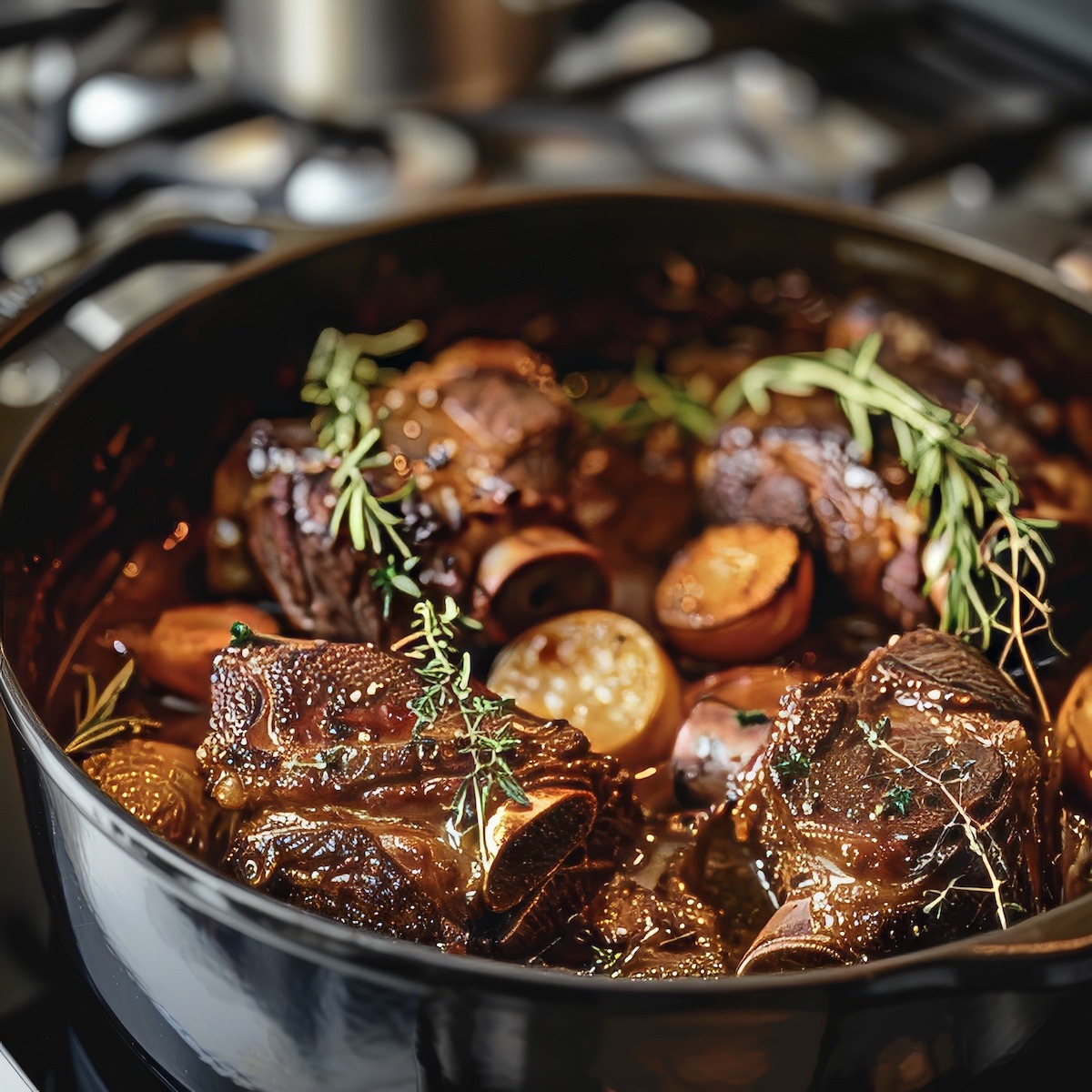
Chicken
The best cuts of chicken are the legs and thighs, although many people like to raise a whole chicken. You also want to use chicken on the bone with skin so you get all the fat and connective tissue.
There’s no reason to braise boneless, skinless chicken breasts. You are better off sauteing or grilling them.
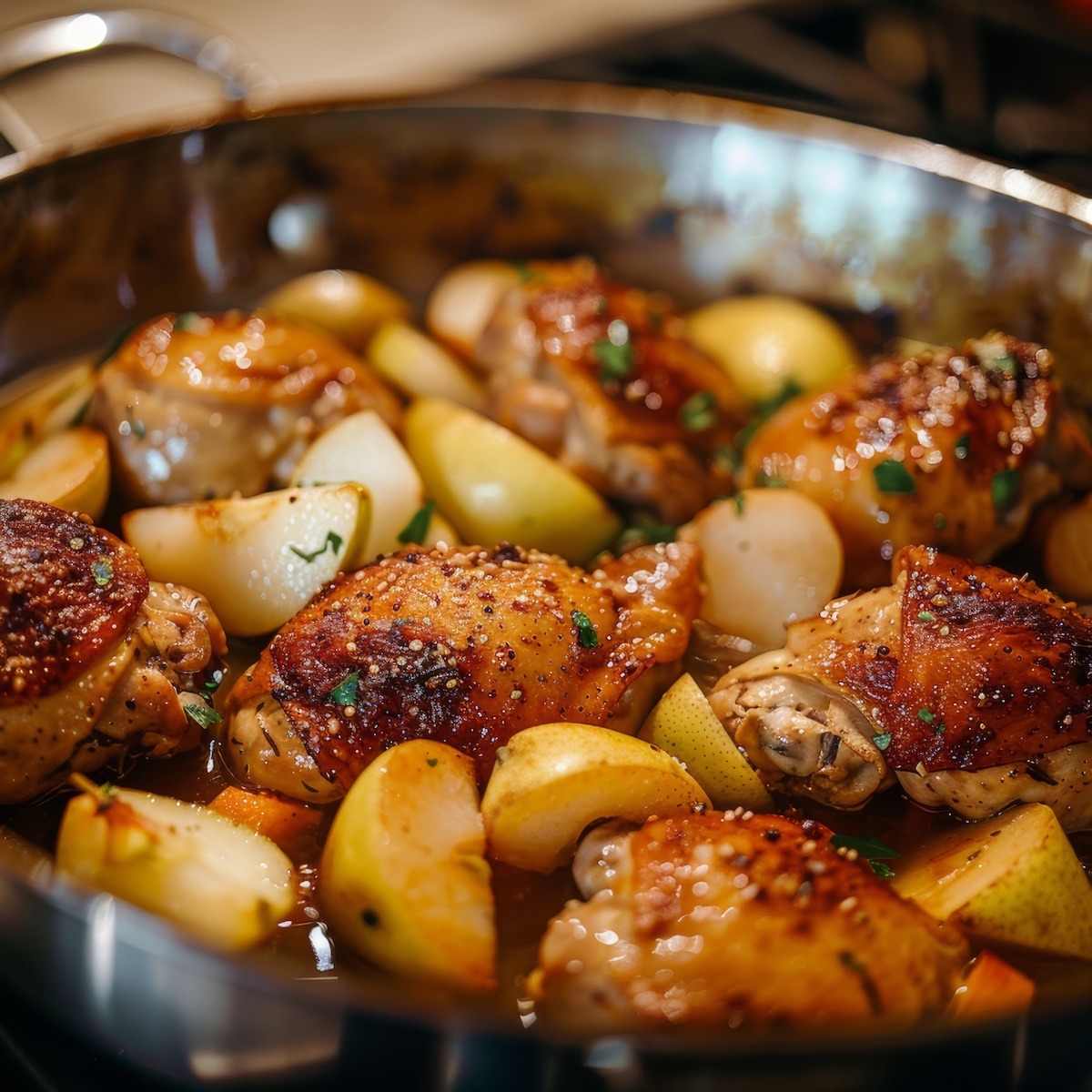
Fish
Although you can braise about any fish you like, large, firm fish is the way to go. Sharks and swordfish are worthy of a braise, but tender filets like tilapia or cod will fall apart on you. If you do braise a more tender cut like flounder, be sure to shorten the braising time.
Fruits & Vegetables
Again you want to stay with the hardier varieties. Squash, sweet potatoes, leeks, parsnips, carrots, beets, cabbage, and onions are great braised alone or with meat and chicken.
I like to braise meat with firm pears and apples in the fall and winter, but I might braise chicken with pineapple in the summer.
Braised Vegetables – the science is the same, except the moist heat breaks down the vegetable’s cellulose and expands its starches. As a result, the fibers soften, giving the vegetables an incredible texture and flavor depending on your cooking liquid.
When braising meats with vegetables, you may want to remember that the vegetables will cook much quicker than the meat. Therefore, you should wait until the last hour or two of cooking to add them so they aren’t overcooked.

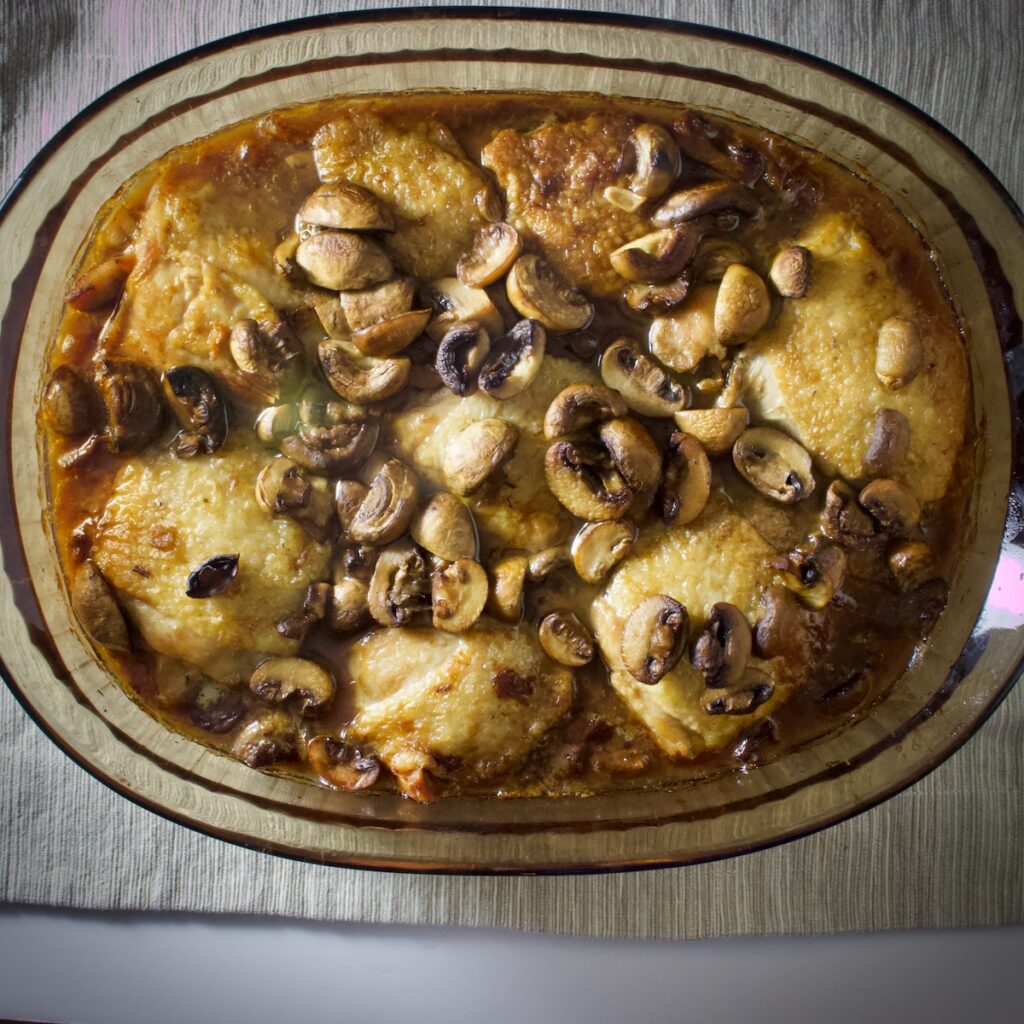




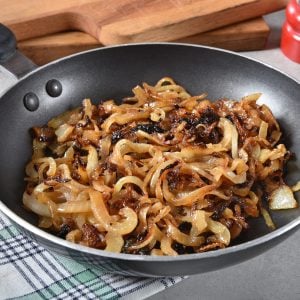
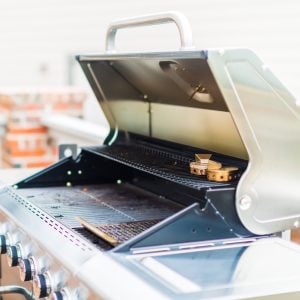
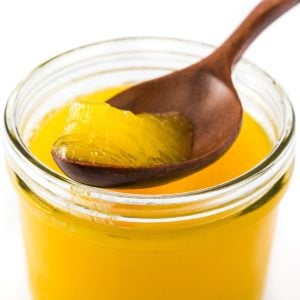
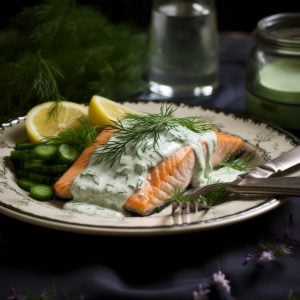
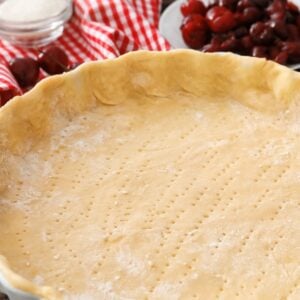
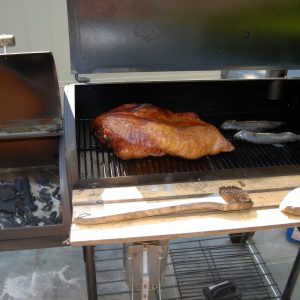
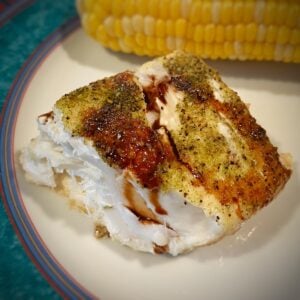
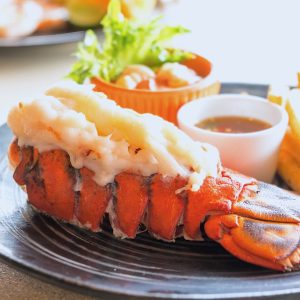


28 Responses
I love dark meat chicken on the bone but my husband doesn’t like the way it turns out when I roast it so I’m looking for a new way to cook it. thanks for sharing.
Thank you. I will be experimenting with braising for the first time. Dave
Thank you for the concise description of braising.As a cognitively impaired person, this article was perfect to reconnect me with a method of cooking that is easy, enjoyable & winter-perfect with the heat from the stove top and wonderful aromas warming the kitchen. Also, as a retiree it’s important to stretch the budget, and tough cuts that come out tender are perfect for the first meal and the secondary meals,like soup or goulash,that braising provides. Thanks!
I enjoyed reading your response. You certainly do not seem as though you are impaired at all cognitively. I especially agree with your observation regarding utilizing less expensive cuts of meat when braising….that and the taste are reasons enough to use it often! Thanks!
This was such a great post! I just re-blogged it on my own cooking site; couldn’t have explained it any better myself! Thank you for such a detailed explanation of the technique.
After 7+ years disabled, a serious stroke, I have had to live on ‘prepared meals’ from my local supermarket (thankfully ‘Waitrose’) As I approach full recovery I’m looking forward to the pleasure of being able to cook for myself again. I learnt to cook, largely from Elizabeth David’s glorious books – ‘French Provincial Cooling’ and ‘Medittaranean Cooking’ – in my early 30’s, (1960’s) – but I’ve lost it all. I need to start over.
I love ‘French Cuisinne’ and also wish to be as organic as possible.
Sincerely, Bernard Staines
This was a really cool technique. It is a good form of heating food in Calgary. It looks delicious, that’s for sure.
Brilliant post! Thank you!
You could definitely see your enthusiasm within
the work you write. The world hopes for more passionate writers such
as you who are not afraid to mention how they believe. Always
follow your heart.
i love braising! been really easy for me to prepare innumerable dishes. helps a lot especially at this time that i am having chemotherapy.
Sorry to hear about your health situation Susan. My thoughts and prayers are with you.
Hi there! I came across your post after I made braised meat the other night that turned out tough! So, here is my question…a lot of braising recipes will tell you to cook the meat a certain length of time based on pounds. Would it be more accurate to say just cook it till it is tender? For example, if I would have cooked this meat longer the other night, would it have eventually gotten tender or I just did it wrong? The recipe said to cook it an hour per pound…it was a one pound piece, so I cooked it for an hour and called it a day.
Ps…I can’t recall what the meat was but it was some sort of cheap steak that said “great for braising” on the package
🙂
Hi Monica, if I’m cooking a tough cut of meat that needs braising, I like to say, Cook it to fork tender. I’m guessing the person who said cook it for an hour a pound thought you were cooking a much larger piece of meat. Not knowing what cut of “cheap steak” you purchased, it’s hard to say how long I would cook it but it’s hard to image it would only take 1 hour. I think you have it right. “Cook it till it is tender”.
Hello! I love braising pot roasts and chicken. I have always done it on the stove in a dutch oven over very low heat (after initial browning). Generally it is at a very low simmer (<200F) (bubbles very slowly). Why is the oven set to 350F? Won't the liquid boil at that temp instead of simmer?
Great question Paul and to be honest I use 350°F because that’s how I learned to braise but never really knew why so I did a little research. What I learned is air is a poor conductor of heat so putting a covered pot into the oven even at 300°F-350°F won’t achieve a rolling boil. If you braise meats on top of the stove, you are using direct heat, a much more effective heating method and would keep the braise at a simmer by regulating the temperature.
I realize this is an old post, but it’ll eventually reach a boil as low as about 195-200f if it is covered because of the pressure change. To maximize flavor without ruining the texture of the meat you are braising, best off doing it like a restaurant and when you move it to the oven, have it at about 250-300f and either keep the lid cracked open a bit for equilibrium or do the parchment w/ vent method. It also allows for your sauce to start concentrating its flavors reducing the amount of time you have to reduce it afterwards
Thanks Angelo for this great tip. I will incorporate it into the post. Keep them coming.
I have had mixed success with braising and have not figured out why. I cooked a whole shin of beef for over 10 hours (recipe said four…) and it became more tender (in parts) but absolutely not the melting fork-soft effect that I expected. Many recipes state that the meat does not need to be completely immersed in the cooking liquid (for example Raymond Blanc shin of beef) – does it work better if the meat is fully submerged?
Mark, when you fully submerge the meat, you are essentially stewing the meat and not braising it.
Thanks for the through overview behind the science of braising. It is informative and interesting.
Please help!
I think this is the technique I’ve been trying to do when making pork chops however, mine have always turned out tough. I usually bring the heat up to high to get the gravy boiling and then turn it down to low. Is it turning out tough because I was too fast bringing it up to a boil? I don’t know what I’m doing wrong.
Justine, braising is for tough cuts of meat like shoulder or rump. Pork chops are typically tender cuts from the loin and are better grilled or pan-fried. Saying that, you can braise pork chops at a very low temperature but you have to cook them for a while, like over an hour to as much as 2 hours. How long did you braise your chops?
G’day mate, just curious to whether i can brown my meat in a frying pan with oil then transfer the meat into a heavy based pot, or cook the meat on a high heat in the pot, then turning the temperature down to begin braising?
Sure, you can brown the meat in a fry pan or cast iron skillet and then transfer to a slow cooker or even do everything in a Dutch Oven or an enameled cast iron pot.
Sorry, I’m not sure I understand what you mean by ‘Website’.
I just read How to Braise Everything (June 2018). Wonderfully concise and informative, by-the-way. The title really caught my attention I was looking forward to reading about braising as it applied to boneless, skinless, chicken breasts. Darn, you say it doesn’t. Still, muscle fiber is muscle fiber, so why would braising not apply to chicken breast, I wonder. Wouldn’t the muscle tighten up and squeeze out moisture and then, given enough time, relax and draw it back in–the lack of collagen not withstanding? Any thoughts you have would be greatly appreciated. If you can point me to some reference material, that would be great too. Hope to hear from you. Thanks.
Hi Dick, of course you can braise chicken breasts but why would you. Braising is typically used for cooking tougher cuts of meat with lots of connective tissue that does better with this cooking technique. Boneless, skinless chicken breasts do better using a quick pan fry cooking technique but you can still braise them if you want to. I would suggest you cut the breast meat in to cubes so the cooking time is less thus preventing the meat to dry out as quickly.
“…, but why would you?” That’s a good question. We eat a lot of poached chicken breast, or would really, but even poaching it seems to dry it out and make it tough. So, based on your article, I thought perhaps the problem was that breast muscle contracts as you describe, expels moisture, and is cooked before it’s had an opportunity to relax and take moisture back in. Hence, braising seemed like a possibility.
Thank you for your prompt reply. This is the only article of yours that I have read–so far. But, I’ll be back, as the terminator said. Thanks again. Best regards.
I was always taught that you absolutely never sat your meat in the liquid. It was placed on a bed of vegetables and a little liquid was added but not deep enough to touch the meat. I shall try your method, it also makes sense as does the way I’ve been taught and using for 50+ years.
Thanks